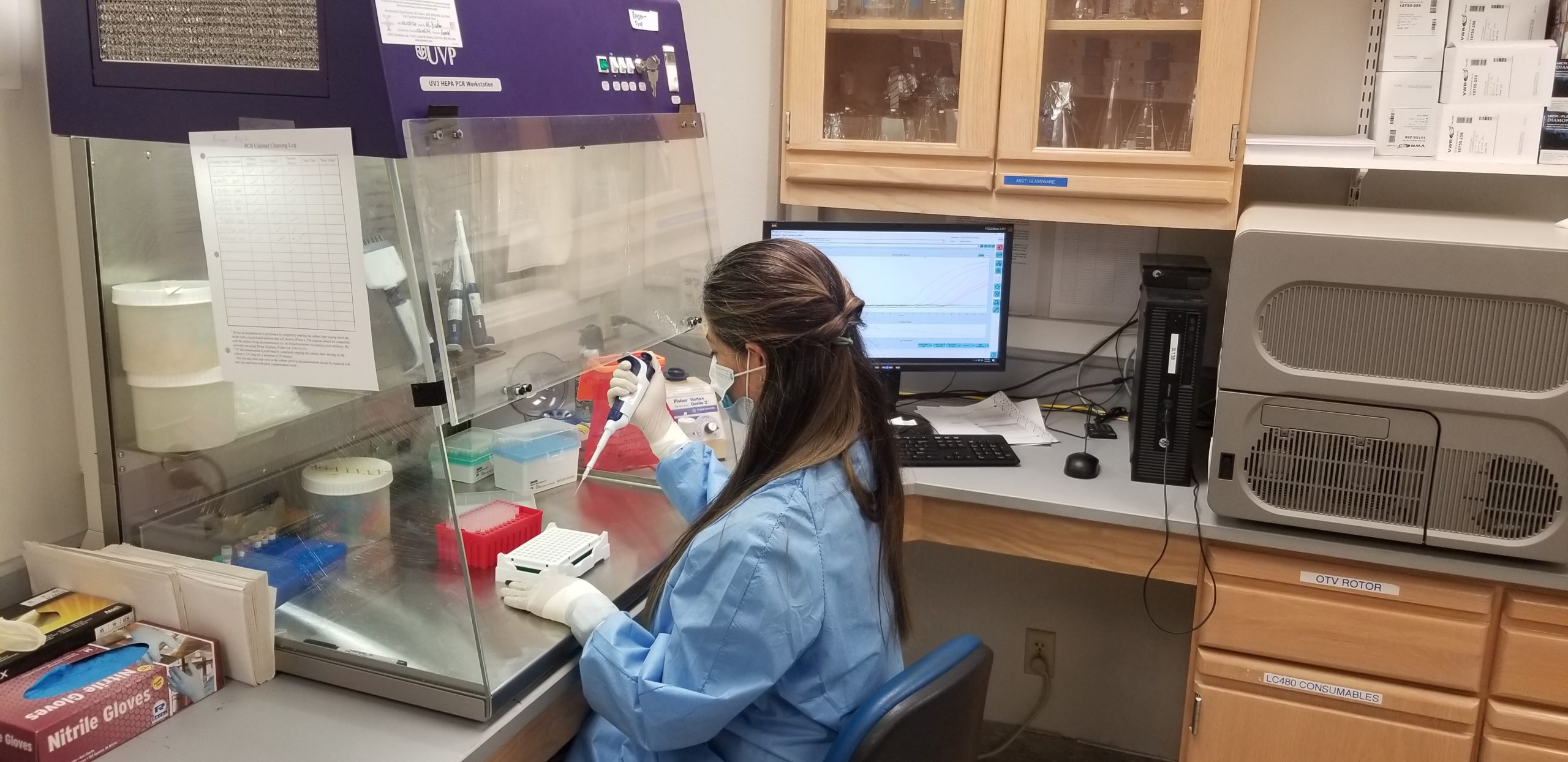
By Roni Gehkle, Clean Water Editor
When the COVID-19 virus began spreading rapidly throughout the United States, the staff at Los Angeles County Sanitation District (LACSD)wasted no time planning and developing a wastewater sampling system that could help monitor and track the SARS-CoV-2.
“First, we wanted to demonstrate that our treatment plants were effective at removing the virus. This was important to ensure there was no impact to health and safety as our recycled water is reused or discharged to surface waters,” Ferrante said. “We found the SARS-CoV-2 viral RNA in influent samples, but not in the treated water of any of our treatment plants.”
It wasn’t long before it became clear that there was a correlation between the trends in concentration and the trends in infection cases. The Sanitation District also noticed that the wastewater data changes occurred prior to new case reports. Therefore, its goal was also to provide data that could help public health experts manage the pandemic.
“Because wastewater treatment plants collect wastewater from large regions, testing untreated wastewater for the virus may help determine whether the number of infected people is increasing or decreasing in the region,” Ferrante said.
LACSD’s lab team consists of an in-house group of microbiologists that regularly conducts routine virus and pathogen monitoring of the Sanitation District’s recycled water. Ferrante said that the team’s type of testing usually conducts very specialized work, and the microbiologists have a lot of experience.
“Our laboratory’s staff developed a lab test method that detects the SARS-CoV-2 genetic material, ribonucleic acid or RNA, in wastewater. The method is based on the same RNA test method developed by the Centers for Disease Control and Prevention,” he said. “Our staff developed a method to detect the SARS-CoV-2 RNA in wastewater and used the method to test incoming wastewater —untreated sewage—as it enters a treatment plant, and cleaned water.”
Ferrante explains that no special equipment was needed to test for the virus. The team followed CDC established guidelines for the safe handling of wastewater to address the potential for creating aerosols that may contain the SARS-Cov-2 virus during the sample concentration step.
The team did a lot of research into the sampling project. It has been established that enveloped viruses, such as coronaviruses, have an affinity for the solids portion of the sample and, therefore, most viruses could be removed during standard sample filtration and concentration.
Ferrante said that staff developed a testing method for incoming wastewater that consists of three main steps: First, the unconcentrated sample is directly mixed with an RNA stabilization solution that inactivates all microorganisms and preserves the RNA within the sample. Next, total RNA from the stabilized sample is extracted, concentrated, and purified. Finally, a molecular biology test is performed on the total RNA extracts.
LACSD also obtained a solution and extraction sampling kit from Zymo Research.
Initially, the team collected samples from the Sanitation District’s largest reclamation plant that produces tertiary treated water —San Jose Creek Water Reclamation Plant (SJCe) in the San Gabriel Valley —and its largest wastewater treatment plant, the Joint Water Pollution Control Plant (JWPCP), that receives flows and solids from approximately 5 million residents in Los Angeles County. These two facilities allowed the team to look at potential infection trends of a large population.
“We monitored the influent three times weekly beginning mid-April through mid-May of 2020,” Ferrante said. “At that time, we began experiencing a shortage of reagents due to supply chain issues and decreased monitoring to twice weekly until October 2020 and then once per week until the end of the year to conserve reagents. At the beginning of 2021, we started monitoring three times per week at only our JWPCP facility.”
From the inception of investigating the idea of surveillance testing in February 2020, continuing through the process of developing virus genetic sequence information and RNA stabilizing solutions becoming commercially available, it wasn’t until mid-April 2020 that LACSD was able to begin testing. After more than 16 months of testing, Ferrante feels that the Sanitation District has achieved its expected goals in the project.
“Our testing can give an early warning to increasing infections and can demonstrate if control measures are resulting in a downward infection trend,” he said.
Throughout the project, the team has shared results with the Los Angeles County Department of Public Health, and since June 2020 has posted the data publicly on the LACSD website. They are currently collaborating with the California Department of Public Health and the State Water Resources Control Board on testing that is being conducted at the JWPCP. The three-times-a-week data will be part of the “California Surveillance of Wastewaters” which the California Department of Public Health is currently developing. The data is also shared with the CDC for its National Wastewater Surveillance Program, including data from 13 states.
Meanwhile, the Sanitation District, in collaboration with Zymo Research, has also participated in a study with the Water Research Foundation to test 36 methods used to quantify the SARS-CoV-2 genetic signal in raw wastewater. This study led to a sampling method based on the one developed in the LACSD laboratory.
The District’s data was included as part of a pending research study from University of California at Irvine on detecting SARS-CoV-2 in wastewater.
The LACSD team is also participating in a program funded by the Department of Health and Human Services (HHS) scheduled to be completed by mid-August. Biobot, a wastewater analytics company, is conducting the HHS program with the goal of monitoring over 300 facilities.
To see examples of LACSD’s surveillance sampling see the Sanitation District’s website at https://bit.ly/37IrkvU. To see information from the CDC on how agencies can begin sampling go to the CDC National Wastewater Surveillance System (NWSS)at bit.ly/cdc-nwss.